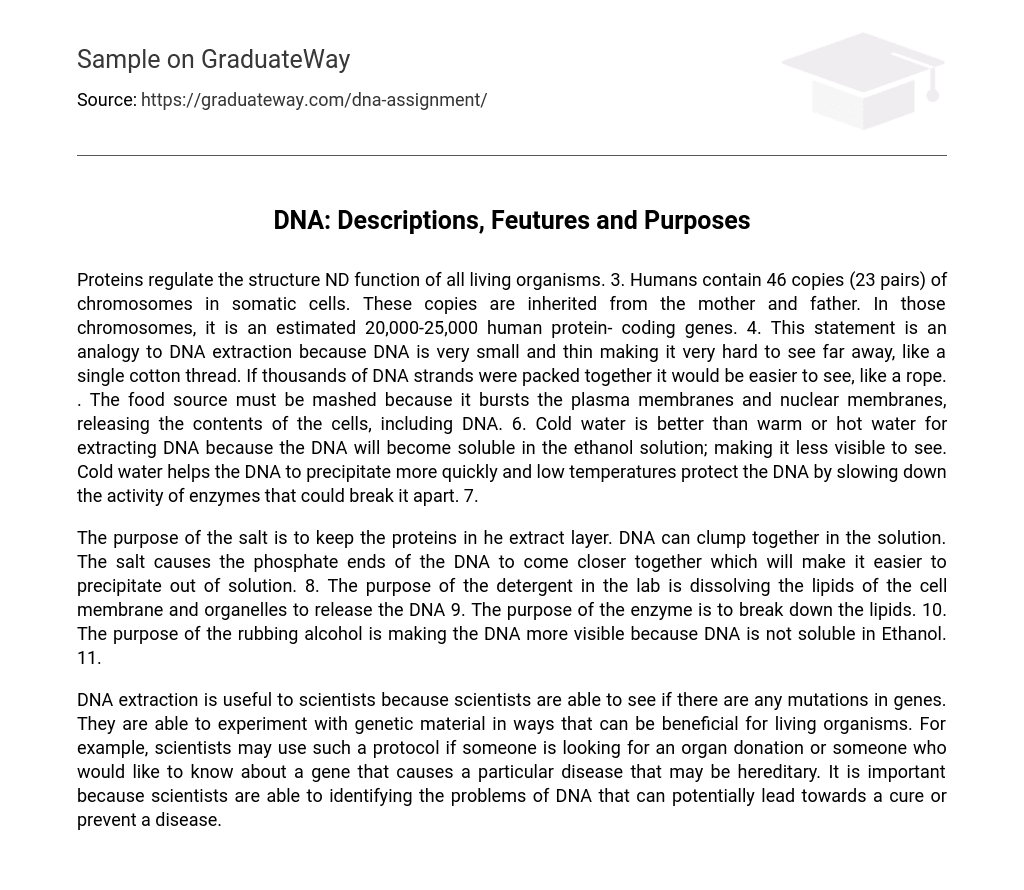Proteins regulate the structure ND function of all living organisms. 3. Humans contain 46 copies (23 pairs) of chromosomes in somatic cells. These copies are inherited from the mother and father. In those chromosomes, it is an estimated 20,000-25,000 human protein- coding genes. 4. This statement is an analogy to DNA extraction because DNA is very small and thin making it very hard to see far away, like a single cotton thread. If thousands of DNA strands were packed together it would be easier to see, like a rope. . The food source must be mashed because it bursts the plasma membranes and nuclear membranes, releasing the contents of the cells, including DNA. 6. Cold water is better than warm or hot water for extracting DNA because the DNA will become soluble in the ethanol solution; making it less visible to see. Cold water helps the DNA to precipitate more quickly and low temperatures protect the DNA by slowing down the activity of enzymes that could break it apart. 7.
The purpose of the salt is to keep the proteins in he extract layer. DNA can clump together in the solution. The salt causes the phosphate ends of the DNA to come closer together which will make it easier to precipitate out of solution. 8. The purpose of the detergent in the lab is dissolving the lipids of the cell membrane and organelles to release the DNA 9. The purpose of the enzyme is to break down the lipids. 10. The purpose of the rubbing alcohol is making the DNA more visible because DNA is not soluble in Ethanol. 11.
DNA extraction is useful to scientists because scientists are able to see if there are any mutations in genes. They are able to experiment with genetic material in ways that can be beneficial for living organisms. For example, scientists may use such a protocol if someone is looking for an organ donation or someone who would like to know about a gene that causes a particular disease that may be hereditary. It is important because scientists are able to identifying the problems of DNA that can potentially lead towards a cure or prevent a disease.





